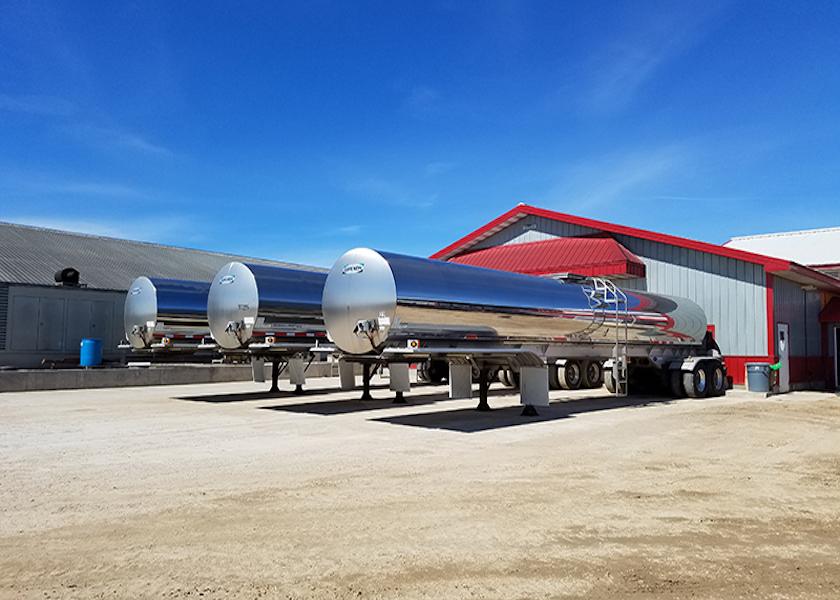Where Will Milk Prices Find Support?

The recent decline of Class III milk futures is one for the record books. The fall of over $5.00 per cwt since early June certainly was unexpected when looking at reduced cattle numbers, limited expansions taking place due to high costs and a tight heifer market, and high feed costs. However, when looking at the impact on milk price seen during the Great Recession of 2007 into 2009, it maybe should not have been such a surprise. In a previous article I wrote on June 13, 2022, I compared the impact the recession had on milk prices. When the recession began at the end of 2007, the Class III milk price was $21.64. Over the period of the recession, price fell to a low of $9.31. Class IV price moved from $21.87 to a low of $9.45. So far, the current decline fails in comparison.
Fundamentals are different which may show a different price movement but not the impact of lower milk prices. A recession changes consumer buying habits which will have a negative impact on overall demand. People will need to eat but changes will be made due to high food costs. Substitutions are made or less of one food or another food item is purchased. There is less food consumed away from home which will impact demand from certain foods compared to others.
What is different about the impact on the market now is that Class III prices have fallen more than Class IV. During the previous recession in 2007 to 2009, Class IV fell more quickly than Class III but ended up falling a similar amount once it was all said and done. There was quite a difference in butter and cheese prices then compared to now. During the recession, butter price traded in a range from $1.09 to $1.77. Block cheese prices traded in a range of $1.04 to $2.29. this is quite a stark contrast to what we are currently seeing.
Butter
Butter has been holding very well so far this year, but Grade A nonfat dry milk has not been so fortunate with price falling to the lowest level since October 20, 2021. It may be only a matter of time before butter price will experience more pressure. However, butter exports remain very strong despite a higher U.S. price than world price. This may limit the downside price weakness due to reduced domestic demand being offset by international demand.
Source: United States Dairy Export Council
Cheese
In contrast with the high butter price, we have low cheese prices even though exports continue to do very well with an increase of 23% in June exports compared to June 2021. However, this has not had a similar impact on price. Even though export demand is good, There is a lot of cheese available with total cheese inventory in the U.S. in May at a record high.
Source: Unites States Dairy Export Council
It had been anticipated that cheese prices would have uncovered a level at which buyers would step up and be more aggressive and purchase for end of the year demand. However, buyers have not seen the need to do so. Sellers continue to move product rather than hold onto it in anticipation of a seasonal increase of price. As long as the product is available, buyers will purchase on an as-needed basis. The extent of the decline of cheese prices is uncertain, but what we do know is that it will not decline forever. We also know that the current high inventory of cheese will not be reduced very quickly either. This leaves a market that may have a difficult time seeing a significant increase of prices anytime soon.
I will be at the World Dairy Expo this year in Madison, Wisconsin in the AgMarket.net booth TC 664. If you are making plans to attend, please stop by the booth to say Hi and see what we have to offer. The dates for the trade show are October 4th – October 7th.
Robin Schmahl is a commodity broker with AgDairy, the dairy division of John Stewart & Associates Inc. (JSA). JSA is a full-service commodity brokerage firm based out of St. Joseph, MO. Robin’s office is located in Elkhart Lake, Wisconsin. Robin may be reached at 877-256-3253 or through the website www.agdairy.com.
The thoughts expressed and the basic data from which they are drawn are believed to be reliable but cannot be guaranteed. Any opinions expressed herein are subject to change without notice. Hypothetical or simulated performance results have certain inherent limitations. Simulated results do not represent actual trading. Simulated trading programs are subject to the benefit of hindsight. No representation is being made that any account will or is likely to achieve profits or losses similar to those shown. There is risk of loss in trading commodity futures and options on futures. It may not be suitable for everyone. This material has been prepared by an employee or agent of JSA and is in the nature of a solicitation. By accepting this communication, you acknowledge and agree that you are not, and will not rely solely on this communication for making trading decisions.







